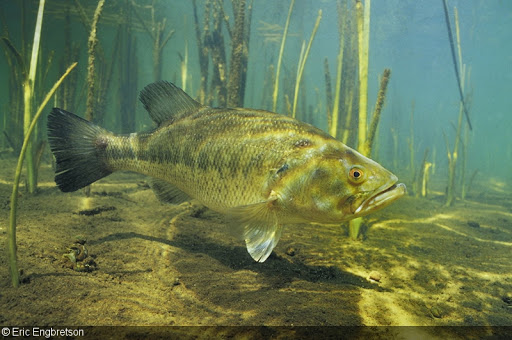Establishing a Pattern
The most important stage to consistently catching bass is establishing a pattern. Based on all you have learned in the previous chapters about current, tides, seasonal approaches, and cover, you know that bass react to circumstances in a predictable manner. This occurs each time the same set of circumstances occur. Thus, this is the beginning of establishing a working pattern on the lake system you are fishing.

Just as important, to increase your success with bass fishing is to understand your quarry. I cannot stress the importance of this enough. Establishing a pattern is essential to understand how a bass lives in its environment. Knowing where the bass can be found at any time or place is something you must develop. When a professional bass angler fishes in a tournament, they may be armed with several patterns. These serve as backup plans, if you will. Always go fishing with a plan in mind, thus preparing by establishing a pattern. Think about the areas you plan on fishing, why you think fish may be there, and the best way to catch them.
Find at least one deeper water pattern
Get yourself a good topo map and begin familiarizing yourself with the system you are going to explore. Start with the basic seasonal and weather patterns for the period you plan to fish. With these in mind, examine the topo map for likely areas where the fish should be. This is based on these conditions. When you arrive at the boat launch of your chosen lake or river you should have a high level of confidence. Feel that your seasonal patterns, while establishing a fishing strategy, have directed you to the areas with the greatest potential for holding fish. Furthermore, the weather and current patterns will indicate more precisely the fish’s location for you in establishing these patterns.
Usually there are fewer than five or six preferences in cover in an area that consistently holds bass. This makes your search a very manageable one. Once you identify those preferences in a creek, for example, you can begin to eliminate areas where bass could be holding. To do this, generally, opt for searching with the shallow, visible cover first. This method is crucial when establishing a pattern for your fishing strategy.
Many anglers don’t take the time to search what they
can’t see. If you find bass on shoreline cover or shallow water structure, you can enjoy the day catching fish from the same cover in your current system. Establishing a reliable pattern in fishing is indeed beneficial.
Don’t work the more difficult to find structure located in deeper water unless you are planning to fish for more than one day. In this case, you would want at least one deeper water pattern. Deeper water fish are less affected by severe seasonal
weather and will be more stable over a few days, making establishing a reliable pattern worthwhile.
Fishing Factors™ (establishing a pattern)
• find three or more patterns
• be conscious of every cast & everything you see
- ask yourself these questions:
• precisely where in the tree were the bass?
• how strong is the current here?
• is there another lure or technique that would
work better?
• how about catching some bigger fish?
Start at home:
study topo map seasonal approach weather patterns structure
• find surface structure and non- surface structure
• usually less than 5 good structure available in any one area
• systematically eliminate structure
• find at least one deeper water pattern
